Print in Google Sheets
- CompanyGoogle
- RoleLead product designer
- Date2017
- Websitewww.google.com/sheets
Before 2017, 70% of the top feature requests for the Google Docs Editors Suite were related to printing in Sheets. These gaps were a major adoption blockers that kept key enterprises from migrating from Microsoft Office to Google Docs.
At the time, the Sheets print experience was bare bones, with few to no settings controls, “take-what-you-get” scale and margin options, zero customization, and, most frustratingly, no Sheets-based preview.
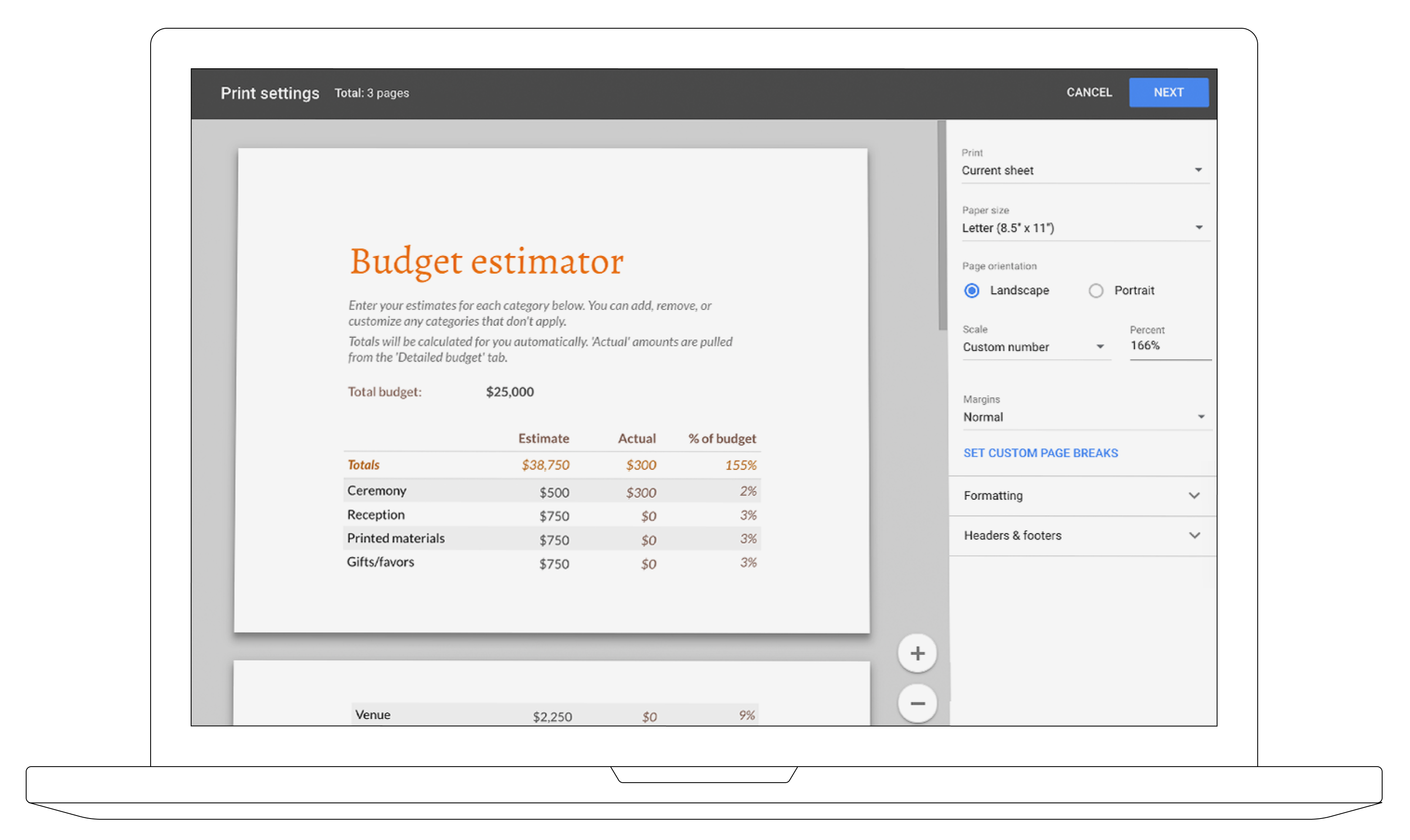
My role
I led design for the new Google Sheets print experience, working closely with PMs, engineers, and user researchers from initial kickoff through final launch.
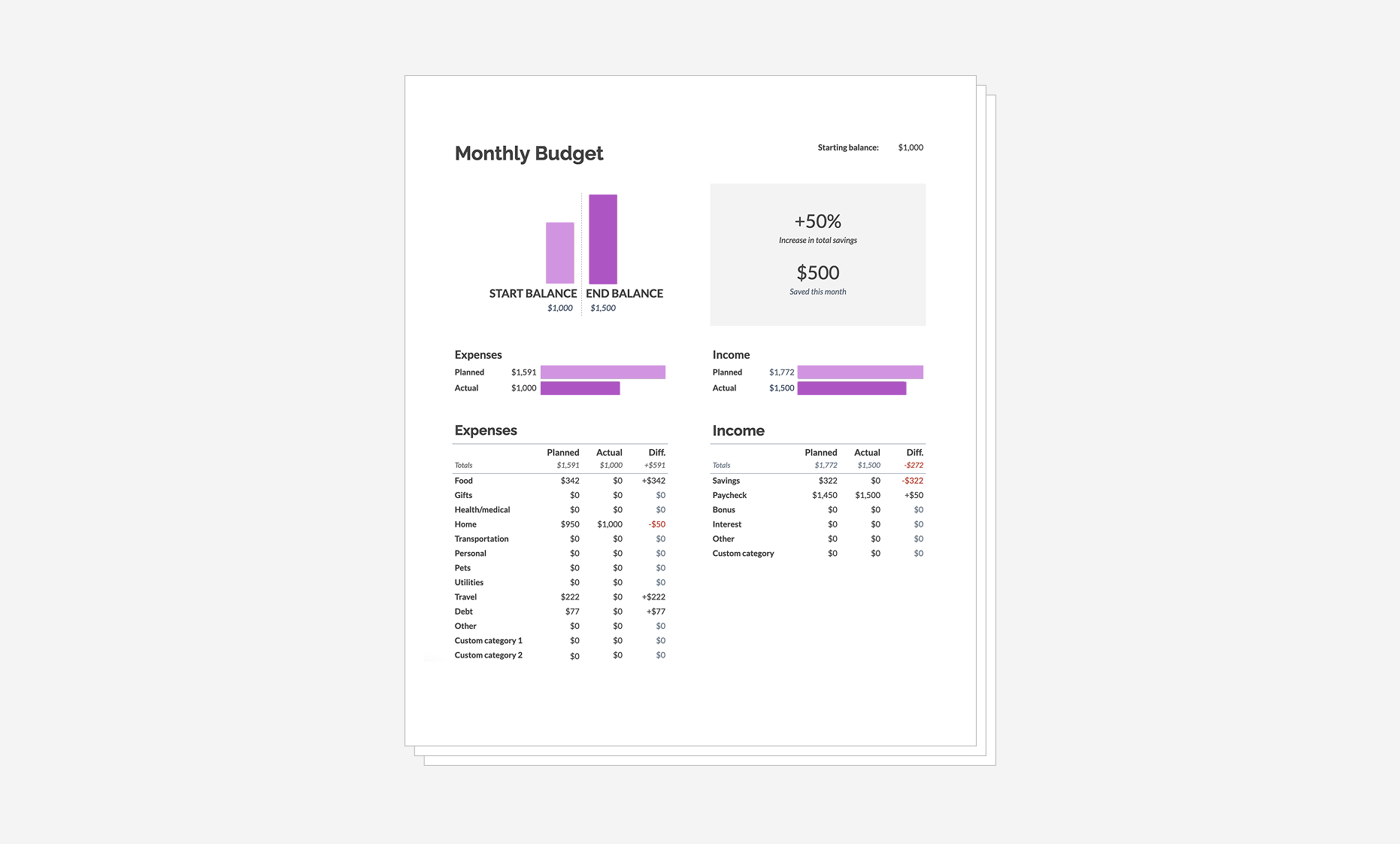
Research
Early in the process, we collected feedback from sales, online forums, and everyday users. This began as a way to solve a series of user pain points, but we wanted to understand user-needs better to help us prioritize and determine what was essential versus nice to have.
Throughout the process, we validated our design through usability tests—from the early ideation phase, to the high-fidelity prototype phase where we had a clearer definition of the user experience, to beta build testing, and finally, post-launch tracking of success metrics.
We learned people print for
- Comfort
- Easy sharing
- Editing offline
- Note scribbling
- Legacy workflows
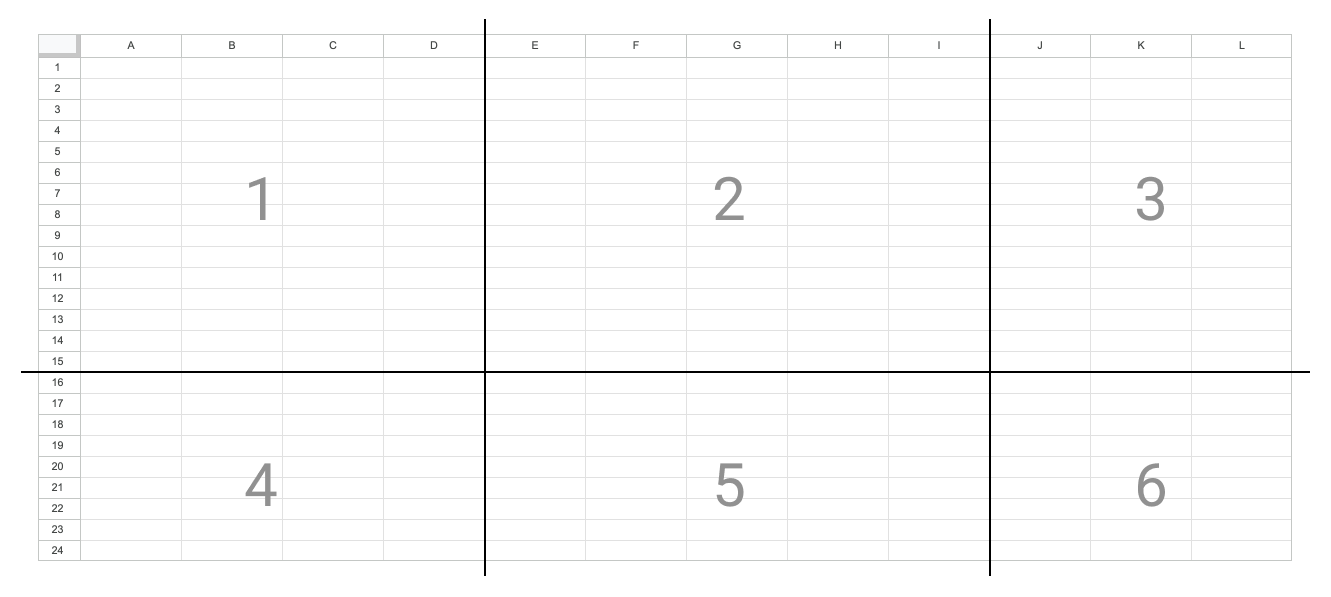
The problem
Unlike printing documents or slides, spreadsheets don’t simply translate a screen’s view to a page-based approximation. Instead, several factors affect the pages outputted and impact the readability of data, the mapping of rows and columns to headers (freezing), and the distribution of elements across multiple pages.
The best-case scenario is when a spreadsheet is small enough to fit everything on one page and still be readable. When there’s too much data and this is not possible, it requires pagination. Pagination introduces design and UX challenges connected to the shape of data and the quirks of user preferences.
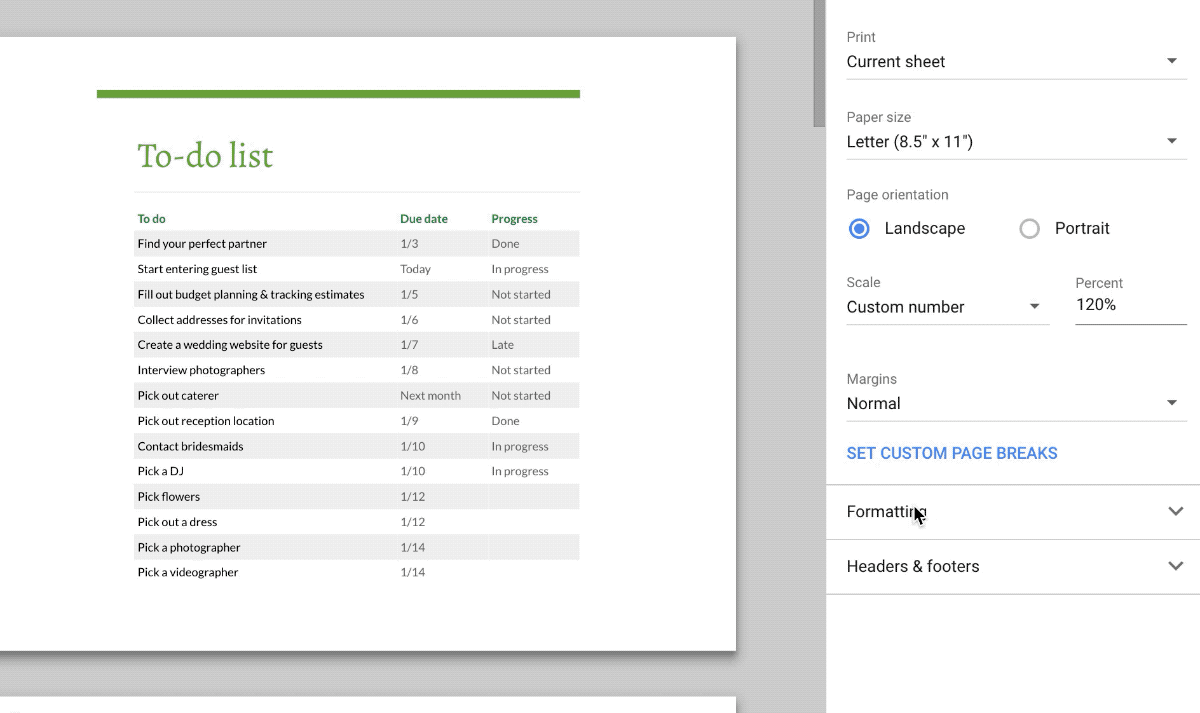
Preview & settings
Because the old print experience had no page preview, users had to jump to the browser’s preview to see the impact of setting changes on pagination. This often led to unexpected page breaks, orphaned data, and wasted paper. We designed and built a dedicated print preview experience for Google Sheets to ensure that setting changes produced the desired pagination and data-scaling results.

Settings: Quick vs Custom
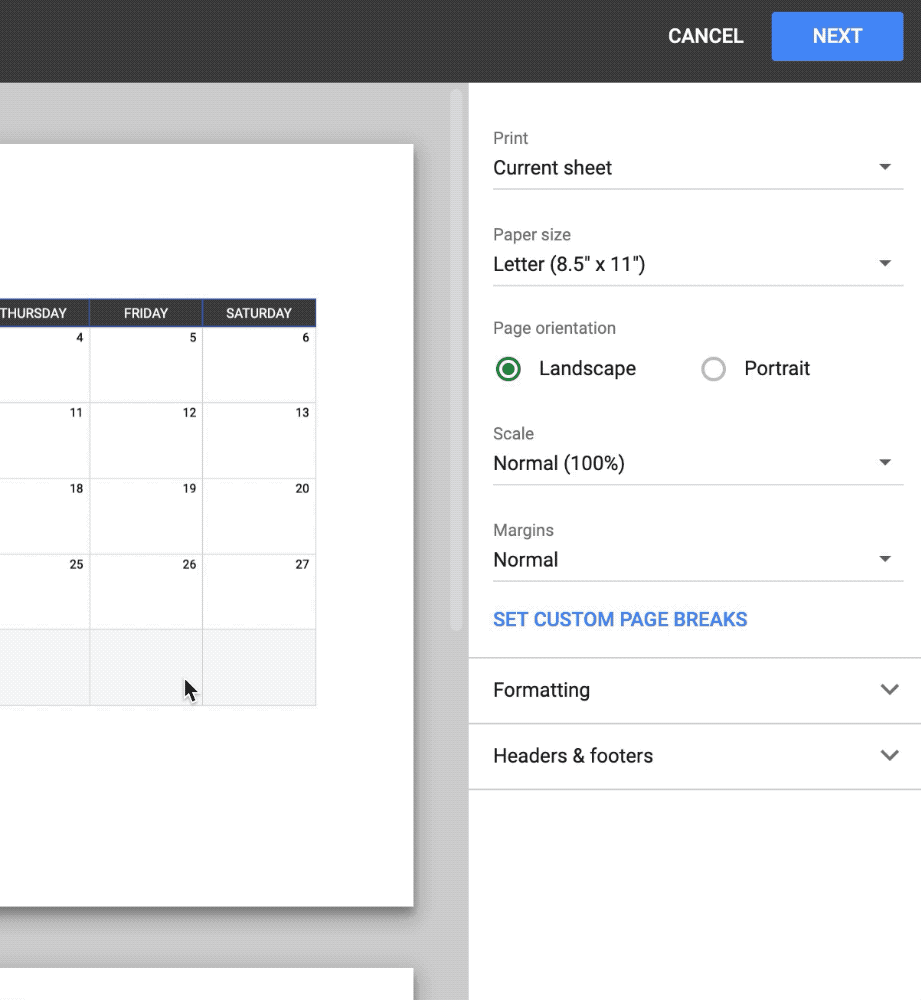
Scale
Scale and pagination are closely interconnected when printing spreadsheets. We prioritized fast scale options like “Fit to width” and “Fit to height” to focus information all in one place, but also enabled a custom scale number input for when those options aren’t a good enough to meet user needs.

Margins
We provided simple margin defaults like “Normal,” “Narrow,” and “Wide.” But for cases where those options weren’t flexible enough, we added a custom margin creator. This feature supports asymmetrical margin setups, such as when users wanted extra space to scribble notes in the margins. Users can either drag the margin lines manually or enter exact values for precise control.
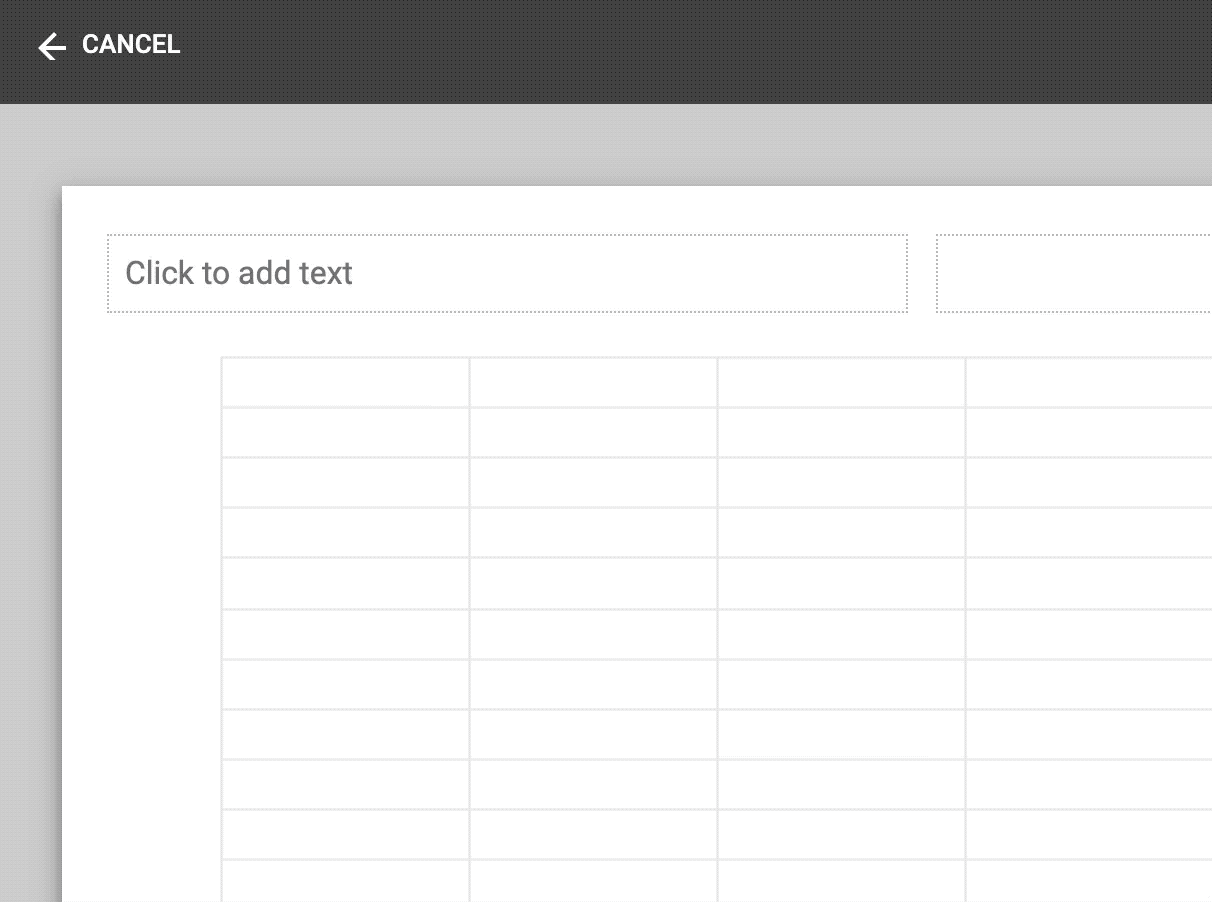
Headers
It’s easy to get lost in multi-page spreadsheets. To help, we introduced a way to insert key document details such as page numbers, sheet names, and dates into spreadsheet headers and footers to improve wayfinding.
There are two ways to do this. The quick option uses checkboxes and default placements in headers that automatically position these elements in standard locations. For cases where the defaults aren’t flexible enough, we added a custom header option (shown here) that lets users insert formatted text widgets, free-form text, and custom page placements, similar to a lightweight script builder.
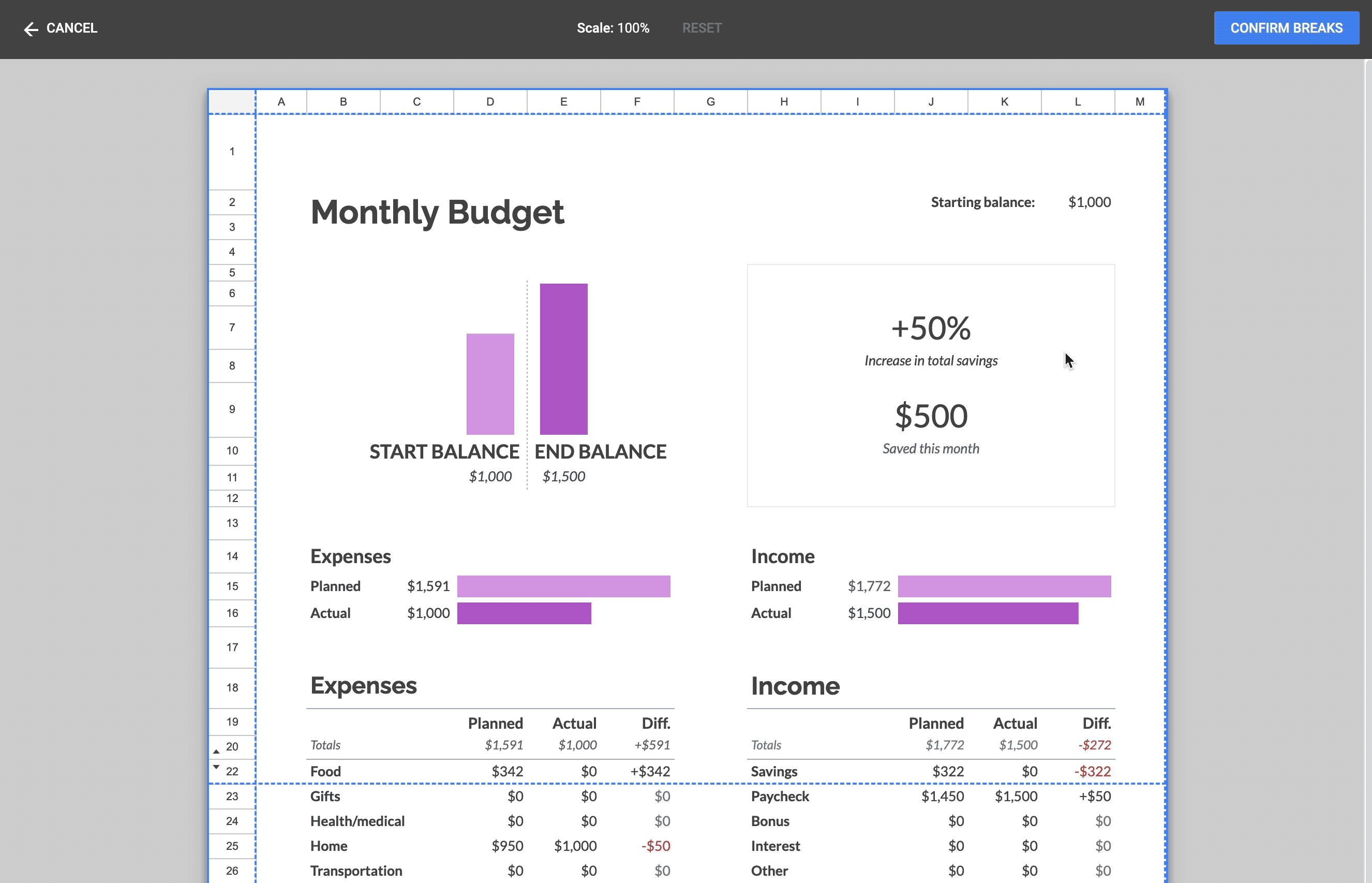
Custom page breaks
We created an alternative Custom Page Breaks builder for situations where the default page breaks aren’t good enough. It allows users to set exactly where pages begin and end. This feature is extra-useful for sheets containing multiple tables or embedded objects like charts that follow a more landmark-based approach to data organization.
Unlike Excel, we centralized this experience within Print settings, improving discoverability and enabling responsive adjustments to fine-tune the page layout in preview.

The impact
The launch received glowing reviews amongst enterprise users and online. It lessened internal resistance to Google Workspace adoption, turbocharged sales efforts, and directly led large new enterprise clients such as Verizon and Whirlpool to transition from Microsoft Office to Google Workspace.
↑ 4x increase
in Sheets print usage
↑ 1+ million
daily users worldwide
✓ Fixed 70%
of the then top enterprise user-problems collected by sales